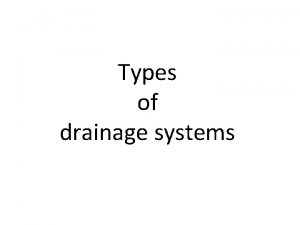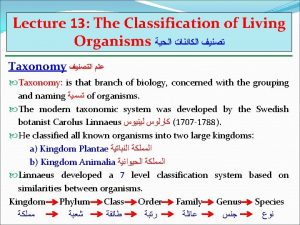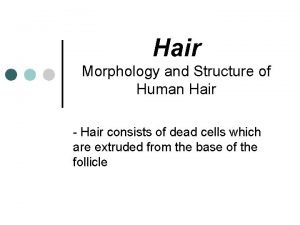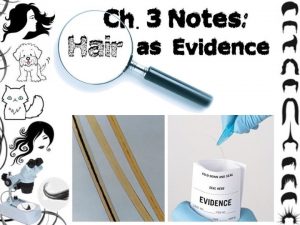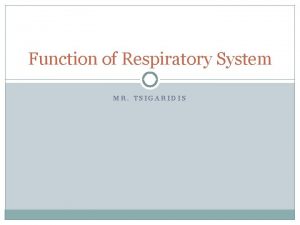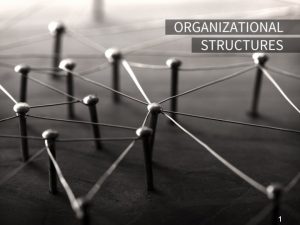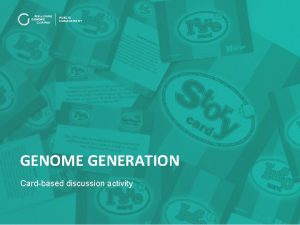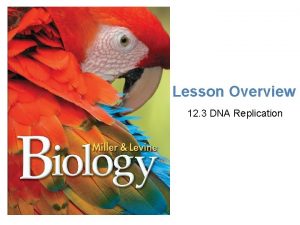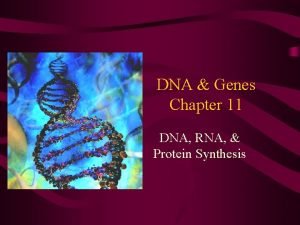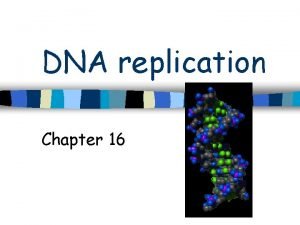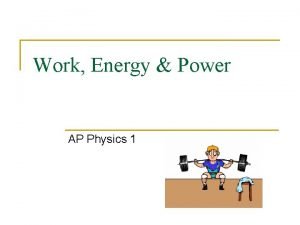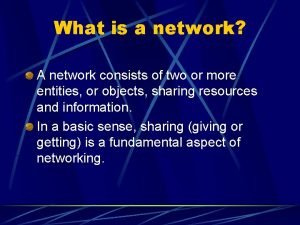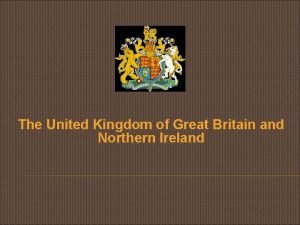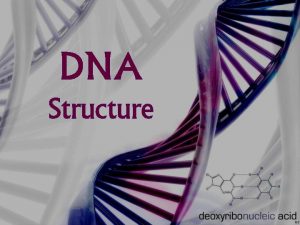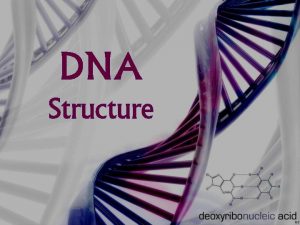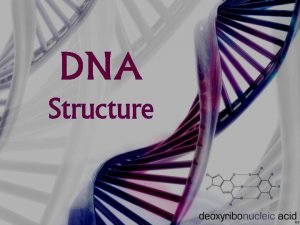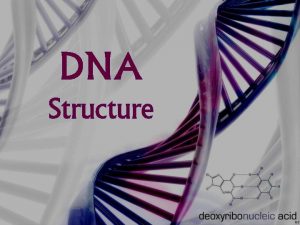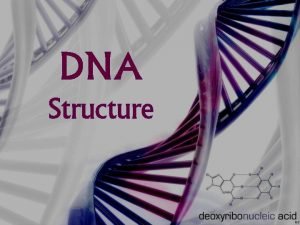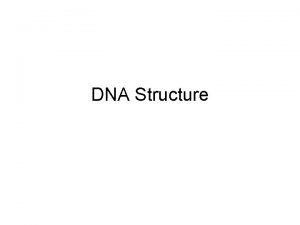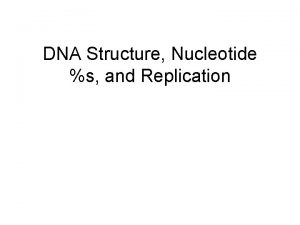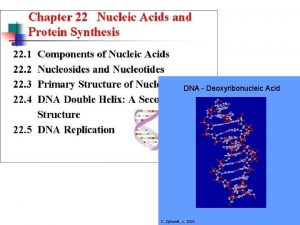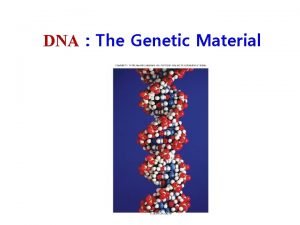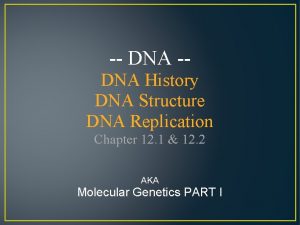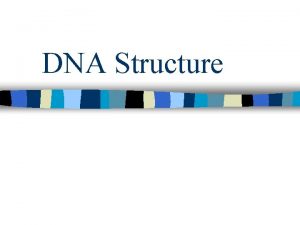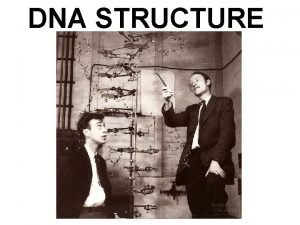DNA Structure DNA Structure DNA consists of two
















- Slides: 16

DNA Structure

DNA Structure �DNA consists of two molecules that are arranged into a ladder-like structure called a Double Helix. �In 1950’s, James Watson & Francis Crick determined model of DNA �A molecule of DNA is made up of millions of tiny subunits called Nucleotides. �Each nucleotide consists of: 1. Phosphate group 2. 5 -carbon (Pentose) sugar 3. Nitrogenous base

Nucleotides Phosphate Nitrogenous Base Sugar

DNA Nucleotide Phosphate Group O O=P-O O 5 CH 2 O N C 1 C 4 Sugar (deoxyribose) C 3 C 2 copyright cmassengale Nitrogenous base (A, G, C, or T) 4

Nucleotides �The phosphate and sugar form the backbone of the DNA molecule, whereas the bases form the “rungs”. �There are four types of nitrogenous bases.

Nucleotides A Adenine C Cytosine T Thymine G Guanine

Nucleotides �Each base will only bond with one other specific base. �Adenine (A) �Thymine (T) Form a base pair. �Cytosine (C) �Guanine (G) Form a base pair.

DNA Structure �Because of this complementary base pairing, the order of the bases in one strand determines the order of the bases in the other strand.

Chargaff’s Rule �Erwin Chargaff – Scientist: Discovered basepairing rules � The bases form the “rungs” on the DNA ladder by complementary pairing A == T C == G T == A G == C A == T T == A Sugarphosphate backbone

A T C G T A C G A T G C T A

Nitrogenous Bases �Double ring PURINES Adenine (A) Guanine (G) A or G �Single ring PYRIMIDINES Thymine (T) Cytosine (C) T or C copyright cmassengale 11

Four Nitrogen Bases of DNA �Pyrimidines: Nitrogeneous bases That have a SINGLE Ring of Carbon and Nitrogen Atoms. Ex. Cytosine and Thyamine �Purines: Nitrogeneous bases That have a Double Ring of Carbon and Nitrogen Atoms. Ex. Adenine and Guanine

Base-Pairings �Purines only pair with Pyrimidines �Three hydrogen bonds required to bond Guanine & Cytosine 3 H-bonds G copyright cmassengale C 13

DNA Structure �To crack the genetic code found in DNA we need to look at the sequence of bases. �The bases are arranged in triplets called codons. AGG-CTC-AAG-TCC-TAG TCC-GAG-TTC-AGG-ATC

DNA Structure �A gene is a section of DNA that codes for a protein. �Each unique gene has a unique sequence of bases. �This unique sequence of bases will code for the production of a unique protein. �It is these proteins and combination of proteins that give us a unique phenotype.

DNA Gene Protein Trait
 Single pipe system
Single pipe system Order of classification of organisms
Order of classification of organisms Morphology of human hair
Morphology of human hair Hair consists of two parts
Hair consists of two parts Pulmonary ventilation consists of two cyclic phases, , and
Pulmonary ventilation consists of two cyclic phases, , and Target market departmentalization
Target market departmentalization Dna polymerase function in dna replication
Dna polymerase function in dna replication Bioflix activity dna replication nucleotide pairing
Bioflix activity dna replication nucleotide pairing Coding dna and non coding dna
Coding dna and non coding dna Replication process
Replication process Dna and genes chapter 11
Dna and genes chapter 11 Dna molecule two views
Dna molecule two views Phosphodiester bond in dna
Phosphodiester bond in dna Physics 1
Physics 1 Sliding into a slit sandwhich
Sliding into a slit sandwhich Network consists of
Network consists of Great britain consists of three parts
Great britain consists of three parts
